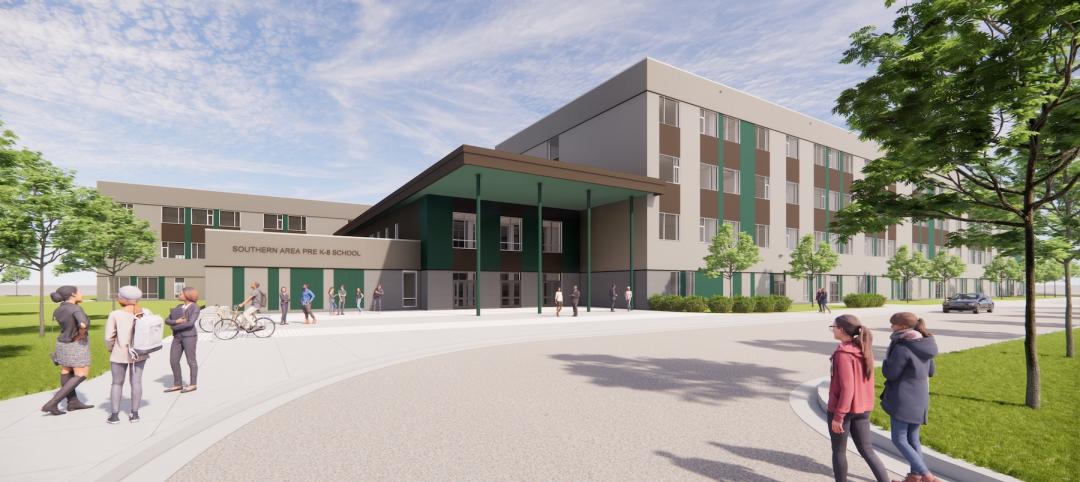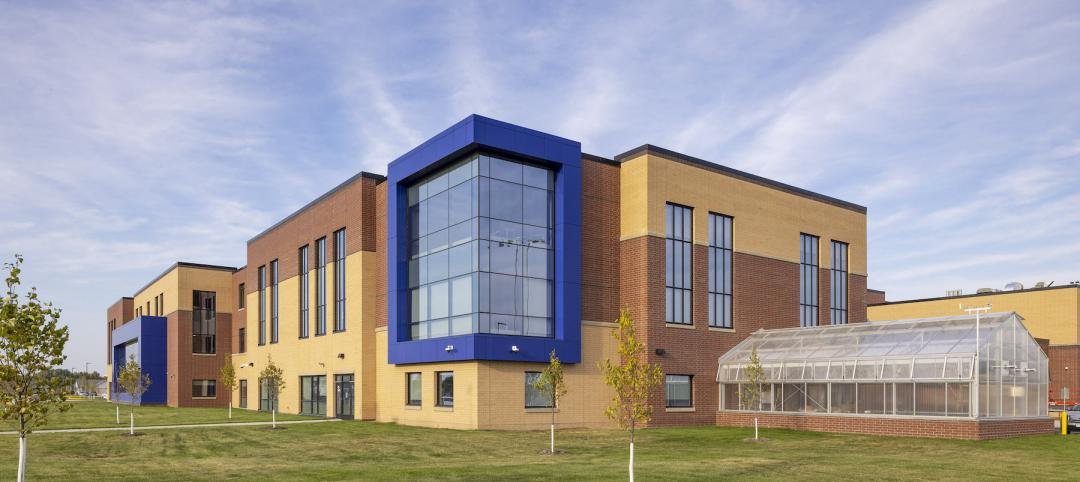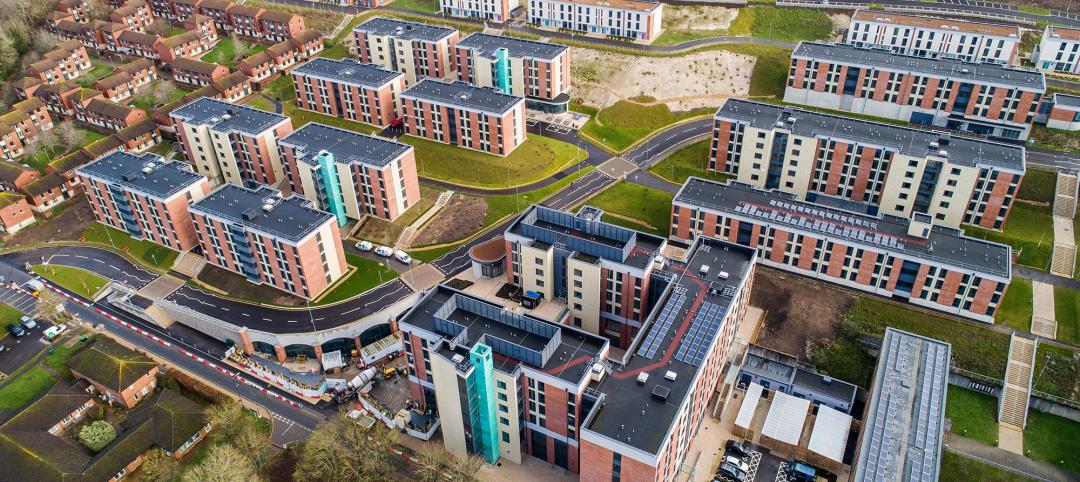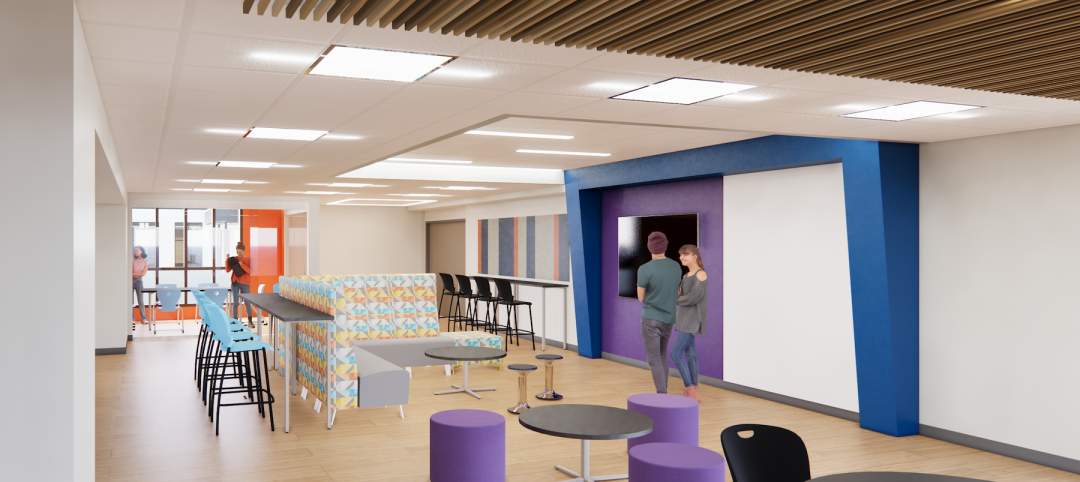Can the use of wood in school construction create healthier, safer, more productive learning environments?
In Japan, there's an ongoing effort by government officials to construct school buildings with wood materials and finishes—everything from floors and ceilings to furniture and structural elements—in the belief that wood environments have a positive impact on students.
Officials with Japan's Ministry of Education believe wood has numerous endemic qualities that promote the learning process. Visually, they say, wood evokes feelings of warmth, softness, and "positive sensations" among students and teachers. Wood's natural insulating properties help control temperature and humidity swings and sound reverberation, and its shock absorbency reduces the risk of injury. And a three-year study of 700 schools by the Japanese Wood Academic Society reports some data to indicate reduced incidence of influenza outbreaks in wooden schools compared to flu outbreaks in reinforced concrete facilities.
While the research on the benefits of wood in schools is largely anecdotal, the Ministry of Education is fully committed to promoting the social and cultural aspects of this traditional Japanese construction material. Since 1985, the ministry has subsidized school construction projects that incorporate wood with between $19,000 and $190,000, depending on the size and scale of the facility. This effort has resulted in a new breed of timber-framed schools and an even greater number of schools incorporating wood-based interior finishes, such as floors, walls, and ceilings. The ministry has committed subsidies through 2007.
At the 8,530-sm Gumma International Academy in Ota, scheduled for completion next month, exposed Southern yellow pine and Douglas fir glulam timbers form the structural post and beam elements for the roof of the K-9 school. Inside, local architect Ceolacanth and Associates specified wood flooring and ceiling panels.
However, the ministry has a long way to go in its mission to infuse Japan's school system with wood. Timber-framed schools make up just 2% of the country's 44,500 schools. Japan is one of the world's largest wood importers, but wood is generally more costly than concrete, and procuring materials can be a challenge for Building Teams, depending on the capacity of the local mills. There are also limitations to the size and scale of timber-frame structures, and they must meet strict fire and seismic safety standards.
Related Stories
Giants 400 | Oct 30, 2023
Top 80 K-12 School Engineering Firms for 2023
AECOM, CMTA, Jacobs, WSP, and IMEG head BD+C's ranking of the nation's largest K-12 school building engineering and engineering/architecture (EA) firms for 2023, as reported in Building Design+Construction's 2023 Giants 400 Report.
K-12 Schools | Oct 21, 2023
The Blueprint Schools Program in Maryland reins in construction time and cost
This collaborative P3 is also committed to expanding participation of small and minority businesses.
K-12 Schools | Oct 4, 2023
New high school in Minnesota provides career pathways for students
This 90-acre school campus also features myriad sports facilities.
K-12 Schools | Oct 2, 2023
4 design strategies for successful K-12 magnet schools
Clark Nexsen's Donna Francis, AIA, Principal, and Becky Brady, AIA, share four reasons why diverse K-12 magnet schools require diverse design.
Contractors | Sep 25, 2023
Balfour Beatty expands its operations in Tampa Bay, Fla.
Balfour Beatty is expanding its leading construction operations into the Tampa Bay area offering specialized and expert services to deliver premier projects along Florida’s Gulf Coast.
K-12 Schools | Sep 5, 2023
CHPS launches program to develop best practices for K-12 school modernizations
The non-profit Collaborative for High Performance Schools (CHPS) recently launched an effort to develop industry-backed best practices for school modernization projects. The Minor Renovations Program aims to fill a void of guiding criteria for school districts to use to ensure improvements meet a high-performance threshold.
Giants 400 | Aug 22, 2023
Top 115 Architecture Engineering Firms for 2023
Stantec, HDR, Page, HOK, and Arcadis North America top the rankings of the nation's largest architecture engineering (AE) firms for nonresidential building and multifamily housing work, as reported in Building Design+Construction's 2023 Giants 400 Report.
Giants 400 | Aug 22, 2023
2023 Giants 400 Report: Ranking the nation's largest architecture, engineering, and construction firms
A record 552 AEC firms submitted data for BD+C's 2023 Giants 400 Report. The final report includes 137 rankings across 25 building sectors and specialty categories.
Giants 400 | Aug 22, 2023
Top 175 Architecture Firms for 2023
Gensler, HKS, Perkins&Will, Corgan, and Perkins Eastman top the rankings of the nation's largest architecture firms for nonresidential building and multifamily housing work, as reported in Building Design+Construction's 2023 Giants 400 Report.
K-12 Schools | Aug 7, 2023
Two new school projects part of larger district-wide improvement plans
Gladstone Elementary in Rhode Island, and Plum Grove Middle School in Illinois, reflect trends toward collaboration and consolidation.
















